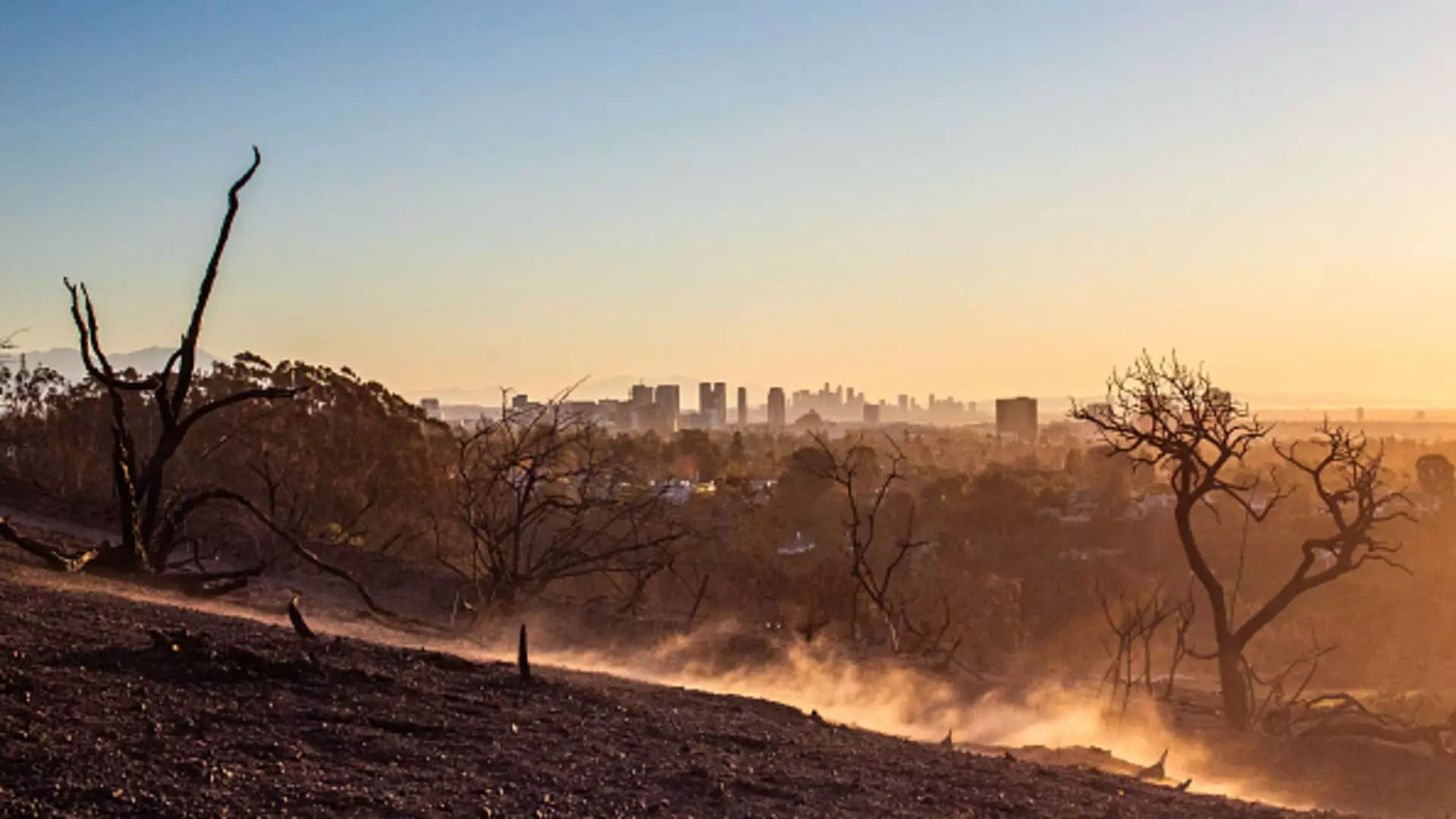As wildfires wreak havoc across regions like Los Angeles, their impact extends beyond immediate devastation, portending a significant shift in homeowners insurance. Analysts warn that the insured losses could exceed $20 billion, thus marking these wildfires as potentially the costliest in U.S. history. This dire forecast comes amid a pre-existing trend of rising insurance premiums—a trend exacerbated by the increasing frequency and intensity of natural disasters. JPMorgan and Wells Fargo’s estimates signal a turning point, not just for California, but for the insurance industry nationwide.
The real issue lies in how this increased financial risk translates into rising premiums for homeowners. Indeed, insurance costs have already been surging, with California’s Department of Insurance allowing for higher rates where coverage in wildfire-prone areas grows. Just this year, some insurers have raised their rates by as much as 34%. These adjustments reflect a broader phenomenon driven by economic forces and environmental factors, creating a sense of urgency among homeowners to reassess their insurance needs.
It’s crucial to recognize how the implications of natural disasters transcend state lines. While it may seem that rising insurance rates in California won’t affect homeowners in other states, the reality is more complicated. According to insurance experts, increased claims from catastrophic events can lead to broader shifts. Insurers, in a bid to balance their finances, might raise premiums in less regulated markets, creating a ripple effect across the country. This poses a challenge for the current regulatory structure, which may not be sustainable if disaster frequency continues to climb.
Holden Lewis, a mortgage and real estate expert, emphasizes this situation’s delicate balancing act. Insurers operating across state lines have to find ways to mitigate losses, often leading to a kind of ‘compensatory increase’ elsewhere. This growing disconnect between the actual risk and the rates charged in various states suggests a troubling future for homeowners. It raises legitimate questions about the feasibility of maintaining current regulatory practices should natural disasters become even more commonplace.
Climate Change: A Game-Changer for Insurance?
The specter of climate change looms large, catalyzing unprecedented weather events. The past year alone brought 27 natural disasters, each costing over a billion dollars, accentuating the fragility of the insurance market. Almost half of all homes in the U.S. now risk severe damage from environmental threats, according to a Realtor.com report. As climate conditions worsen, insurance rates surged by 33.8% from 2018 to 2023, a staggering rise fueled largely by costs associated with extreme weather.
Homeowners across the country are beginning to recognize that they may need to adjust their insurance policies to match rising costs and risks. Average home insurance premiums have already increased sharply, with the national average now pinned at approximately $2,181 annually. Coupled with the escalating expenses related to repairs and reconstruction—where the cost per square foot shoots up from about $166 to $300—many find themselves underinsured, creating worrying gaps in financial security.
The mounting pressure on homeowners to reassess their insurance strategies cannot be overstated. With properties at continued risk from potential natural disasters, maintaining adequate coverage is paramount. Yet, studies indicate that many homeowners may unwittingly renew their policies without updating the coverage limits—an oversight that could leave them financially vulnerable.
Advisors encourage homeowners to consult with their insurers or local contractors to get an up-to-date estimate of their home’s rebuilding costs. Awareness of accurate valuation is essential, not just for understanding premium costs but also for ensuring comprehensive coverage, especially against risks like flooding, which is generally excluded from standard policies.
Looking Ahead: Ensuring Security in Unpredictable Times
As we witness a trend characterized by rising insurance premiums driven by natural disasters, homeowners must take a proactive approach to protect their assets. This requires a deeper understanding of both current policy and potential risks. Engaging with insurance agents regularly to evaluate coverage limits and getting estimates for rebuilding costs are essential steps.
As people navigate these turbulent times, informed decision-making regarding insurance becomes more critical than ever. The ongoing impacts of climate change and natural disasters are creating an uncertain landscape. Therefore, a robust insurance strategy is not just advisable; it becomes necessary for safeguarding one’s home and financial future in an age of unpredictability.

